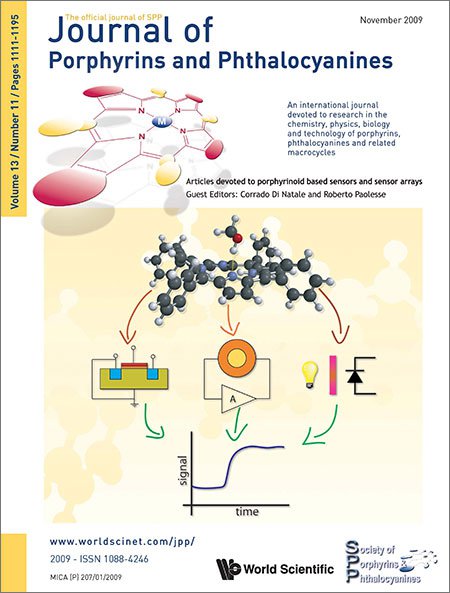Optical oxygen sensor devices using metalloporphyrins
Abstract
Oxygen-monitoring techniques are applied to various fields, such as chemicals, deep sea environment, fluid dynamics, clinical analysis and environmental monitoring. Recently, a variety of devices and sensors based on phosphorescence or photoexcited state quenching of porphyrin molecules have been developed to measure oxygen concentration on the solid surface. Many optical oxygen sensors are composed of porphyrins (platinum(II), palladium(II), zinc(II), metal-free, etc.) dispersed in oxygen-permeable polymer film or directly immobilized onto solid surface via chemical or physical adsorption. Oxygen-sensing systems are classified into four types: (1) phosphorescence intensity change, (2) phosphorescence lifetime change, (3) change of lifetime of photoexcited triplet state, and (4) intensity change of absorption of photoexcited triplet state. In this review, the properties of various optical oxygen-sensing devices using porphyrins and sensing system are introduced.

Handbook of Porphyrin Science now available in 46 volumes


